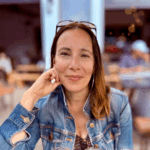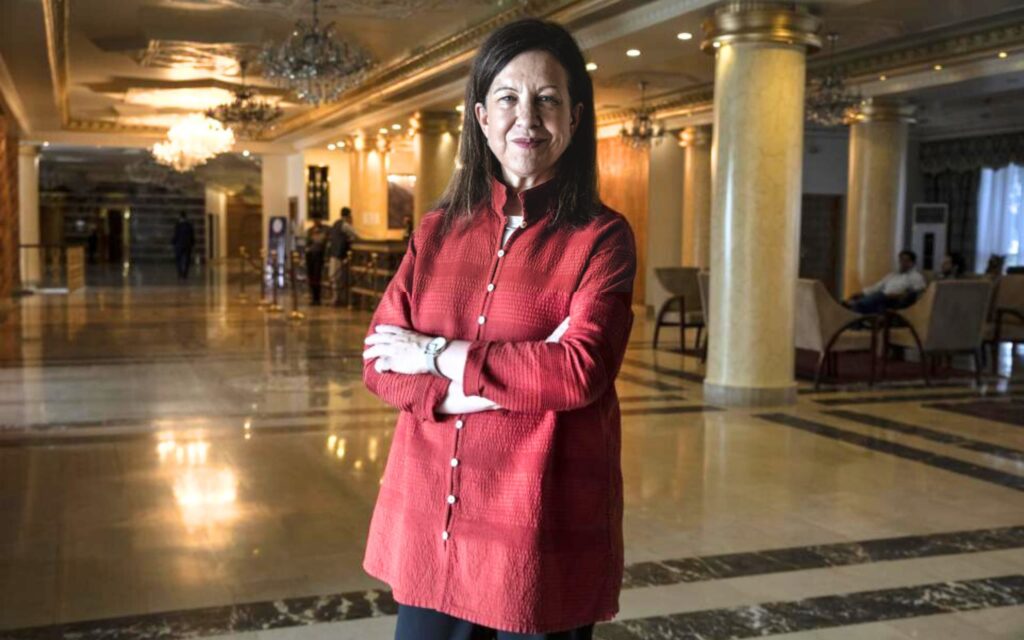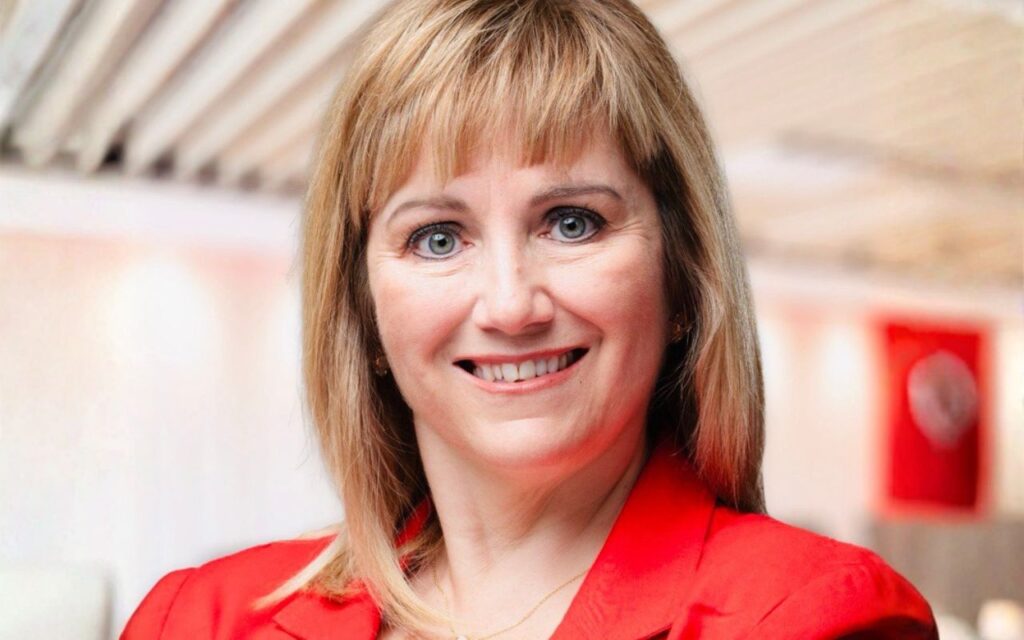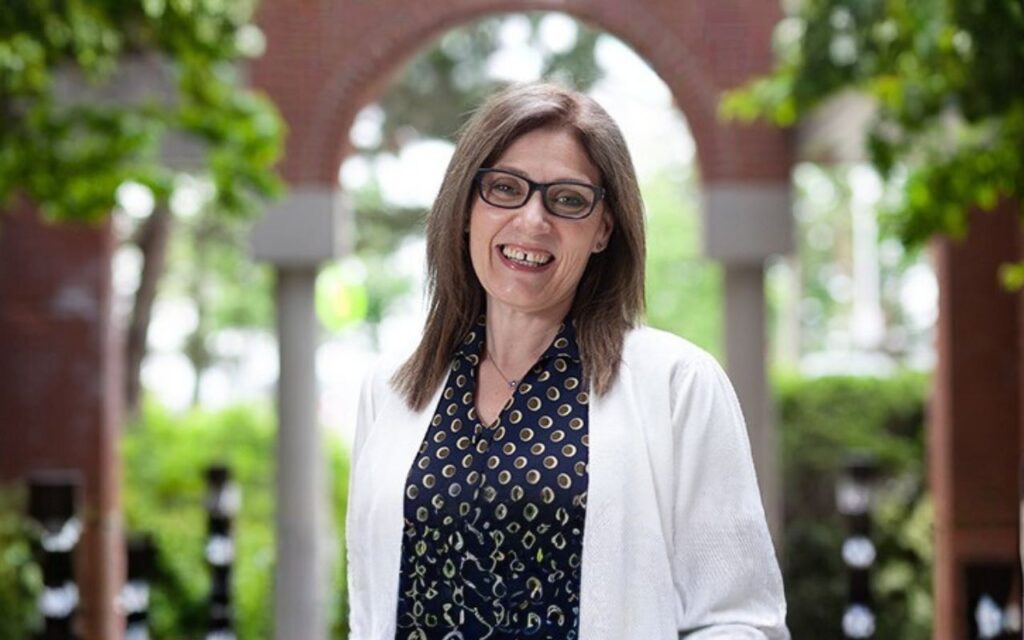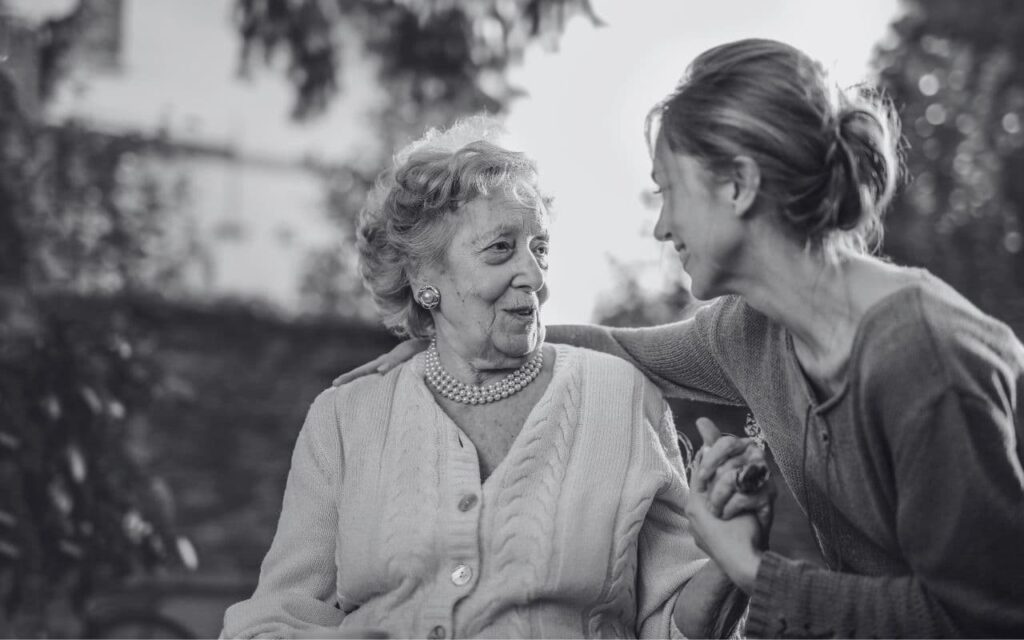
It’s a story far too many women know intimately. You’re raising teenagers, building a career, managing a household and then – almost without realizing when it happened – you’ve also become the full-time caregiver to your aging parent.
Part of this comes from what many call the “good daughter” trap. Parents choose to be parents, but children don’t choose to become caregivers. And yet, when support is needed, it’s often daughters who feel an unshakable sense of duty – and guilt – to step in.
In fact, research shows women disproportionately shoulder caregiving responsibilities, to the tune of over 40 per cent more than men. For many, this “sandwich generation” reality is invisible labour that takes a toll on every corner of their lives.
Sheila Mackenzie of North Vancouver knows it all too well. “My mom lived with me for the last 15 years, and we just moved her into long-term care in April,” she says. “Until that point, I was … making sure she had food, dressing her, doing all of her shopping, taking her to (each) appointment. Day-to-day assistance with everything.”
All of this while raising twins in high school and running her own business. “It was a complete disaster, to be honest,” Mackenzie recalls. “It took an (incredible) toll, mentally. And physically, I didn’t have time to do anything (else).”
Eventually, she went on medication to cope. “It was completely overwhelming. I wasn’t cut out for caregiving … there was no balance.”
The hidden cost of being the ‘good daughter’
Mackenzie’s story reflects what researchers and advocates are sounding the alarm on. Amy Coupal, CEO of the Ontario Caregiver Organization, says burnout is rising sharply among caregivers, especially those in the sandwich generation.
“What we see from our Spotlight Report every year is that rates of caregiver burnout are rising and caregivers are getting to burnout faster than they ever have before,” Coupal explains.
“Caregivers can feel guilt and anger and resentment, as well as hope and joy and possibility. But it can be a lot to balance. And usually what goes (first) is the thing we need for ourselves.”
This mirrors Mackenzie’s experience. Even with a supportive husband and occasional respite from her brother, she bore the day-to-day responsibility. “Ultimately, it fell on my lap,” she says. “I ended up having paid caregivers coming into the home. That gave me three hours a day when (things) were taken care of, but you (still) have to manage those people.”
So, the “good daughter” label hung heavy. Mackenzie describes feeling both pride in what she provided her mom and resentment at how it reshaped their relationship, which became quite fraught once the roles switched.
“I do feel like I was a good daughter. But (it) was very difficult … There was a lot of strife about (boundaries) … I don’t blame her, but I have a life to live and at a certain point, I felt like I was missing out.”
A burden exacerbated by discomfort
For Mackenzie, the caregiving responsibility wasn’t just personal; it felt systemic.
“Vancouver Coastal Health expected me to keep my mom until I went crazy,” she expresses. “If my mom lived on her own, she would’ve been in care years ago. Because she lived with me, there was no urgency, so I ended up placing her in private care (that’s) costing an insane amount of money.”
Coupal adds that part of the challenge is discomfort with planning: “There’s often a reluctance to have those conversations with older adults … because they’re uncomfortable. But not having that plan and facing certain demands or expectations without it also includes a high degree of discomfort.”
Setting boundaries and finding support
So how can women break out of the “good daughter” trap without abandoning those they love? Coupal emphasizes it’s all about planning, support and flexibility when circumstances change (which they often will).
“Look at resources and who’s in that circle of care – whether siblings, other family or community members … It comes down to balancing all of the decisions … and then what’s arising in the moment to make it work.”
For some families, that means dividing tasks: one sibling takes on in-person appointments, another handles paperwork and phone calls from afar. For others, it means leaning on caregiver organizations that provide peer support, helplines and resources.
Mackenzie says moving her mother into care lifted a massive weight. “I’m way less stressed, in a much better place mentally (and) I don’t have to worry every minute about my mom.”
Still, she hopes her experience will be a cautionary tale for others: “Aging in place sounds great on paper … But it’s incredibly disruptive … I’m going to do things very differently. I don’t want to burden my kids.”
